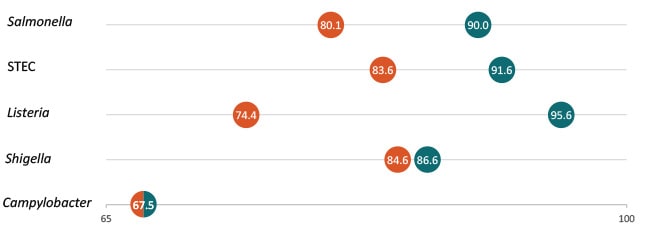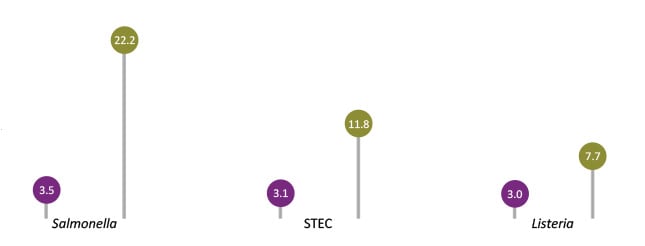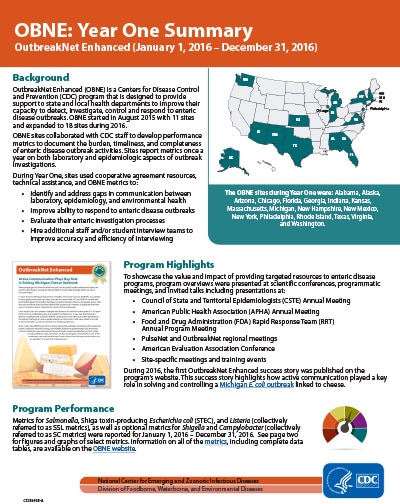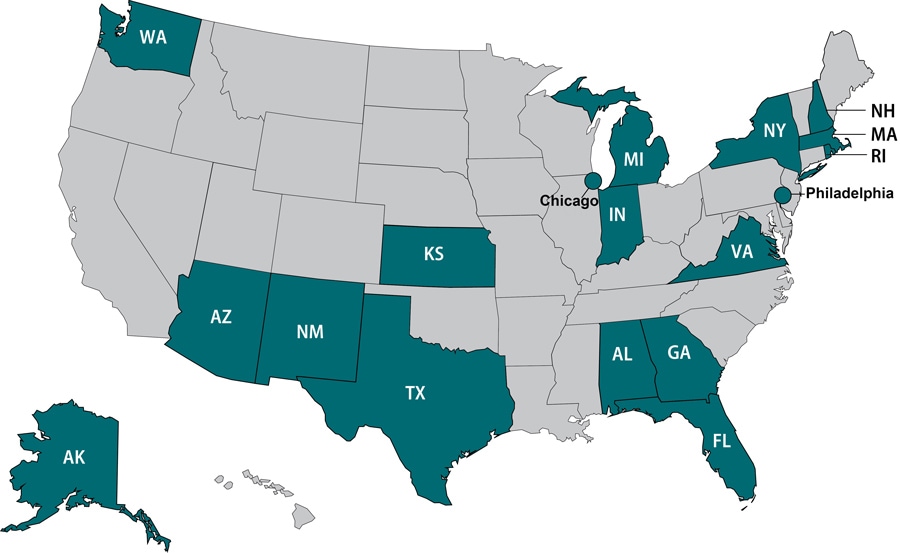OutbreakNet Enhanced 2016 Summary
January 1, 2016 to December 31, 2016
Background
OutbreakNet Enhanced (OBNE) is a Centers for Disease Control and Prevention (CDC) program that is designed to provide support to state and local health departments to improve their capacity to detect, investigate, control and respond to enteric disease outbreaks. OBNE started in August 2015 with 11 sites and expanded to 18 sites during 2016.
OBNE sites collaborated with CDC staff to develop performance metrics to document the burden, timeliness, and completeness of enteric disease outbreak activities. Sites report metrics once a year on both laboratory and epidemiologic aspects of outbreak investigations.
During 2016, sites used cooperative agreement resources, technical assistance, and OBNE metrics to:
- Identify and address gaps in communication between laboratory, epidemiology, and environmental health
- Improve ability to respond to enteric disease outbreaks
- Evaluate their enteric investigation processes
- Hire additional staff and/or student interview teams to improve accuracy and efficiency of interviewing
Program Highlights
To showcase the value and impact of providing targeted resources to enteric disease programs, program overviews were presented at scientific conferences, programmatic meetings, and invited talks including presentations at:
- Council of State and Territorial Epidemiologists (CSTE) Annual Meeting
- American Public Health Association (APHA) Annual Meeting
- Food and Drug Administration (FDA) Rapid Response Team (RRT) Annual Program Meeting
- PulseNet and OutbreakNet regional meetings
- American Evaluation Association Conference
- Site-specific meetings and training events
During 2016, the first OutbreakNet Enhanced success story was published on the program’s website. This success story highlights how active communication played a key role in solving and controlling a Michigan E. coli outbreak linked to cheese.
Program Performance
Metrics for Salmonella, Shiga toxin-producing Escherichia coli (STEC), and Listeria (collectively referred to as SSL metrics), as well as optional metrics for Shigella and Campylobacter (collectively referred to as SC metrics) were reported for January 1, 2016 – December 31, 2016. See below for figures and graphs of select metrics.
Select Metrics for Salmonella, STEC, Listeria, Shigella and Campylobacter

More than
59,000 cases
reported

Over
1,000 clusters
detected

Average of
3.1 days
to initial interview attempt
Sites attempted to interview a high percentage of cases to obtain complete exposure histories
Obtaining exposure history information is a critical element in effectively investigating and solving outbreaks. Download and view chart data excel icon[XLS – 23 KB].

Teal = Percent of cases with an attempted interview. Orange = Percent of cases with complete exposure histories.
Sites maintained the timeliness of completing PFGE for Salmonella, STEC, and Listeria while transitioning to WGS (in median days)
WGS is a newer technique and takes longer to complete. As WGS becomes more routine, this metric will show change in timeliness. Download and view chart data excel icon[XLS – 23 KB].

Purple=median days to complete PFGE. Green=median days to complete WGS.
OBNE sites will continue to improve the timeliness and completeness of enteric disease outbreak surveillance and response activities. They will continue to strengthen their outbreak response programs to conduct faster, better, and more complete investigations, to help limit the spread of foodborne diseases. Download a print version of the OutbreakNet Enhanced 2016 Summary pdf icon[PDF – 2 pages].

Download a print version of the OutbreakNET Enhanced 2016 Summary pdf icon[PDF - 2 pages].
